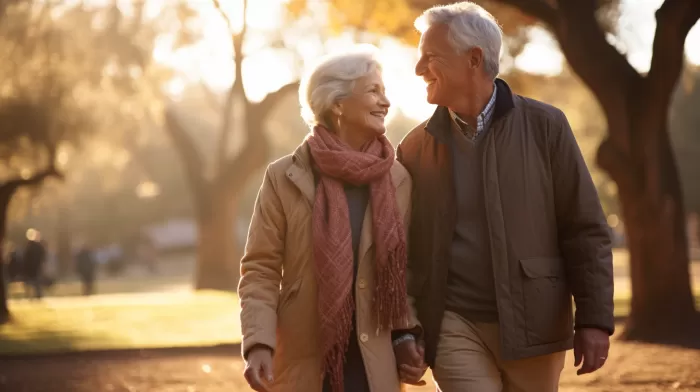Did you know that taking a walk outside can put your life in danger? It turns out, not all walks are created equal for senior citizens. A recent study sheds light on why it’s important for older adults to choose the right walking route to prevent serious injuries.
Senior Citizens at Risk
A study led by Wenjun Li of the University of Massachusetts focused on the walking habits and rates of falls among men and women aged 70 and older. The surprising results revealed that senior citizens who were out doing errands fell more often than those simply walking for pleasure.
The location of an older adult’s home also plays a significant role in their risk of falling. The study found that seniors living in poorer neighborhoods, who primarily walk out of necessity, had higher rates of falls on sidewalks, streets, and curbs. These types of falls have severe consequences, as they’re two times as likely to result in injury and four times as likely to require medical attention, compared to falls in recreational areas.
The Growing Concern of Falls in Older Adults
Falls are a major health concern for older adults, as they can lead to severe injuries, loss of independence, and even death. According to the Centers for Disease Control and Prevention, more than one out of four older adults fall each year, but less than half notify their healthcare provider^[1^].
Sadly, a senior who has fallen once has double the likelihood of falling again. And with an aging population, an increasing number of people are at risk. Not only does this affect the well-being of our loved ones, but it also impacts the healthcare system and its costs.
A call for Safer Environments
The results of the study serve as a wake-up call for city planners, who must take these findings into account when designing walking environments in both recreational areas and areas where older people frequent, such as shopping and conducting business.
This includes making sidewalks safer and accessible by ensuring they’re free of cracks, debris, and uneven surfaces, which pose a higher risk for trips and falls. Crosswalks should also be well-maintained and easily visible, while public spaces should offer ample seating and resting areas for seniors who may need a break during their outings.
Tips for Staying Safe While Walking
If you’re a senior citizen, or someone who knows and cares for an older adult, here are some practical tips for staying safe while out and about:
- Select the right footwear: Choose shoes with non-slip soles, ample ankle support, and a proper fit to ensure stability and prevent falls.
-
Avoid busy areas: Opt for walking in quieter environments with well-maintained pathways, such as parks, nature trails, or indoor malls.
-
Use caution at intersections: Always use designated crosswalks, obey traffic signals, and make eye contact with drivers before crossing the street.
-
Stay aware of your surroundings: Keep alert for any obstacles or hazards in your path, such as uneven pavement or debris, and walk at a comfortable pace for your fitness level.
-
Exercise regularly: Engage in activities that improve your muscular strength, agility, and balance, such as yoga, tai chi, or low-impact aerobics.
-
See your healthcare provider: Schedule regular check-ups to discuss any changes in your mobility, medications, or overall health that may affect your risk of falling.
For more information on causes and risk factors of falls among seniors, visit the National Council on Aging’s website^[2^].
Final Thoughts
The importance of staying active and engaging in physical activity cannot be overstated, especially for older adults. However, the recent study highlights the need for choosing safer walking environments to minimize the risk of falls and serious injuries. Be mindful of your surroundings and take the necessary precautions to ensure a longer, healthier life.
Sources:
[1]: Centers for Disease Control and Prevention, https://www.cdc.gov/homeandrecreationalsafety/falls/adultfalls.html
[2]: National Council on Aging, https://www.ncoa.org/healthy-aging/falls-prevention/



